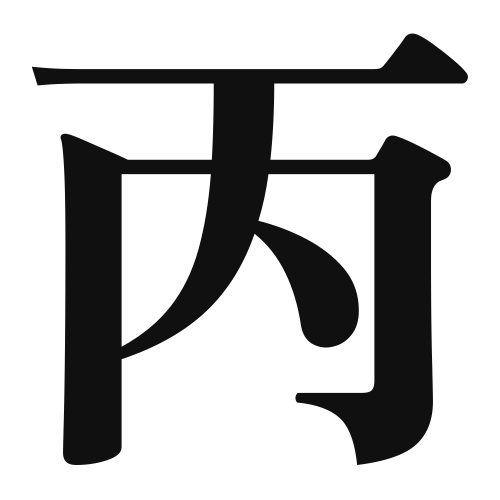1. Overview of Meaning
The kanji “丙” (pronounced “hei” in Japanese) primarily means “third” or “third class.” It is often used in contexts where items or categories are ranked or ordered.
2. Formation and Radical
Formation of the Kanji: The kanji “丙” is classified as a phonetic-ideographic character (形声文字). It combines elements that suggest its meaning and pronunciation.
Radical: The radical for “丙” is “二” (two), which is indicative of its numerical significance.
3. Examples of Usage
Common Words and Phrases: “丙” is often found in terms like “丙級” (third class) and “丙午” (the year of the Fire Horse in the Chinese zodiac).
Example Sentences in Daily Conversation:
- 「彼は丙級の試験に合格しました。」(He passed the third-class exam.)
- 「丙午生まれの人は、特に活発だと言われています。」(People born in the year of the Fire Horse are said to be particularly lively.)
4. Synonyms and Antonyms
Similar Kanji: A similar kanji is “甲” (first) which indicates a higher rank, while “乙” (second) represents the second rank. Each of these kanji denotes a different level in a ranking system.
Antonyms: The antonym of “丙” would be “甲,” as it represents the highest rank, contrasting with the third rank represented by “丙.”
5. Cultural and Historical Background
Relation to Japanese Culture: In Japanese culture, the ranking system is significant in various contexts, including education and traditional practices. The use of “丙” reflects this hierarchical structure.
Proverbs and Idioms: While there are no specific proverbs that prominently feature “丙,” its usage in ranking systems can be seen in various idiomatic expressions related to competition and status.
